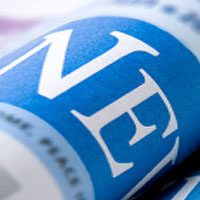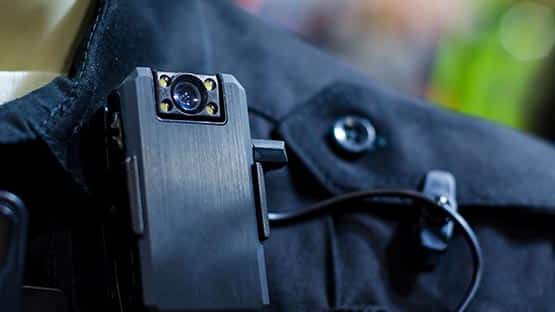
This series of special presentations was created as part of the park’s commemoration of the campaign’s 150th anniversary this fall. “As most of the commemorative activities and events concentrate on the battles themselves, we wanted to include programs that would examine and remember the larger consequences the campaign had on Valley citizens and the entire nation,” according to Eric Campbell, lead park ranger.
To stress the wide area that the campaign affected, the presentations are scheduled to occur at various locations throughout the Shenandoah Valley, along with Washington, DC. A wide variety of historians and scholars were chosen to present the lectures, all of whom are considered to be subject matter experts on their individual topics.
For details or more information, call: (540) 869-3051 or see: www.nps.gov/cebe
August 14th 7:00 p.m.
The Shenandoah Valley’s Role in U.S. Grant’s 1864 Strategy”
Dr. Joseph Whitehorne, historian and author
Location: Middletown Town Office, 7875 Church Street, Middletown, VA 22645
This program will provide an overview narrative of the military events that occurred in the Shenandoah Valley throughout1864 and 1865 with a special analysis of their relationship to Gen. U.S. Grant’s grand military strategic vision to topple the Confederacy.
August 29th 7:00 p.m.
Life Between the Lines: Civilian Experiences in Warren County, Virginia in 1864
Patrick Farris, Executive Director, Warren Heritage Society
Location: Warren Heritage Society, 101 Chester Street, Front Royal, VA 22630
Warren County not only suffered through “The Burning” during the 1864 Valley Campaign, but it also experienced a near-complete breakdown of law and order, as the area lay between the lines. This program will examine not only the impact of the destruction of property to Warren County civilians, but also this era of the nearly total lawless chaos that occurred.
September 11th 7:00 p.m.
The Portable Printing Press in the Civil War
Joan Bourdeau, Curator, Smithsonian Institution
Location: Shenandoah Valley Battlefields Foundation Headquarters (Lee-Jackson Building), 9386 South Congress Street, New Market, VA 22844
Rapid communication in wartime profoundly affected military actions and outcomes. The invention of portable tabletop printing presses at the time of the American Civil War allowed for better communication in the field. Used by both sides, these presses allowed for the rapid production and wide distribution of urgent orders. This presentation will examine the role and impact of the portable press during the American Civil War.
September 16th 7:00 p.m.
Winchester, Kernstown and Cedar Creek: Crossroads in the Fight for the Shenandoah Valley
E. Warren Perry Jr., Writer, Smithsonian National Portrait Gallery
Location: Smithsonian Associates, S. Dillion Ripley Center, 1100 Jefferson Drive, SW, Washington, DC 20026
This program will focus on the Battle of Cedar Creek and its impact, including the famous ride by Gen. Sheridan, on his horse Rienzi, to the battlefield in time to rally his broken army. In addition, Mr. Perry will discuss several objects in Smithsonian collections related to Cedar Creek, including Sheridan’s horse (renamed Winchester after the battle); a 1871 painting by Thomas Buchanan Read; a carte de visite portrait of Jubal Early, c. 1865; and a monumental portrait, Grant and His Generals.
Fee. For information: www.smithsonianassociates.org or (202) 633-3030.
September 25th 7:00 p.m.
“Desirable That Nothing Should Be Left To Invite the Enemy To Return….”
“The Burning” in the Shenandoah Valley
Phillip Greenwalt, Park Ranger, National Park Service
Location: Historic Shenandoah County Courthouse, 103 North Main Street, Woodstock, VA 22664
During an approximately two week period in late September and early October, Gen. Philip Sheridan carried out orders from Ulysses S. Grant that directed “…that nothing should be left to invite the enemy to return. Take all provisions, forage, and stock…such as cannot be consumed, destroy.” Sheridan’s forces did just that.
This program will present the impacts of “The Burning” on the local populace, the reverberating ramifications on the course of the war and the overarching impact on the Shenandoah Valley Campaign’s climatic engagement at Cedar Creek on October 19, 1864.
October 2nd, 7:00 p.m.
Did the Valley Re-elect Abraham Lincoln?
Dennis Frye, Chief of Interpretation, Harpers Ferry National Historical Park
Location: Old Courthouse Civil War Museum, 20 North Loudoun Street, Winchester, VA 22601
Abraham Lincoln informed his Cabinet of the bad news – he would not be re-elected. The war that was supposed to last 90 days now dragged into its third year by the summer of 1864. The Northern public was tired and weary of battlefield defeats, battlefield stalemates, and battlefield casualties. Jubal Early’s invasion of the Union and the burning of Chambersburg epitomized Northern disasters that Lincoln perceived as insurmountable. But Lincoln’s dire situation changed dramatically as the eyes of the United States focused upon the Shenandoah Valley.
October 23rd 7:00 p.m.
Rediscovering the James E. Taylor Sketchbook
Dennis Frye, Chief of Interpretation, Harpers Ferry National Historical Park
Dana MacBean, Curator of Exhibits, Parris Island Museum, USMC, Parris Island, S. C
Location: Museum of the Shenandoah Valley, 901 Amherst Street, Winchester, VA 22601
Artist James E. Taylor was hired by ‘Leslie’s Illustrated’ magazine to cover the movements of Gen. Phillip Sheridan’s army in the Shenandoah Valley. The sketchbook that resulted is now an invaluable resource of drawings and writings documenting that campaign. This program will provide a visual and interpretative guide to some of the best stories from Taylor’s original sketchbook. A multitude of events, from day-to-day, mundane encounters with the people and places to dramatic stories of combat, to the aftermath of battle, will be highlighted.
November 13th 7:00 p.m.
“Ours is no longer a divided country”
The Path to Reconciliation in the Shenandoah Valley
Jonathan Noyalas, Associate Professor of History, Lord Fairfax Community College
Location: Lord Fairfax Community College, 173 Skirmisher Lane, Middletown, VA 22645
This presentation will examine how various factors including population recovery, growing economic stability, an end to Military Reconstruction, and a greater focus on the shared experiences of Union and Confederate veterans sparked the era of postwar reconciliation in the Shenandoah Valley by the early 1880s. It will also explore the role that the Shenandoah Valley’s women played in honoring the Confederate dead and how Union veterans who visited the Valley in the 1880s tried to improve their relations with the guardians of Confederate memory in an effort to advance the cause of national healing.










